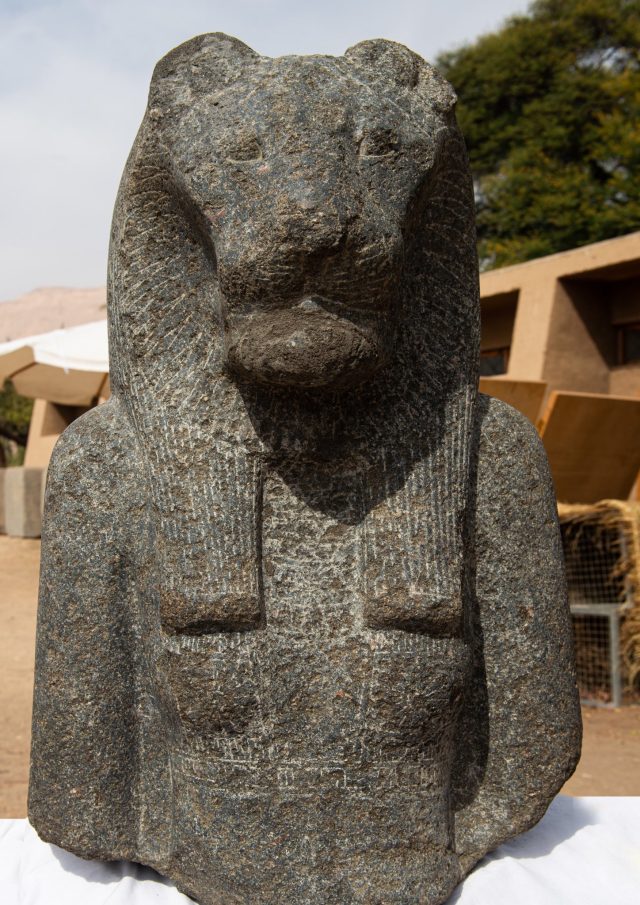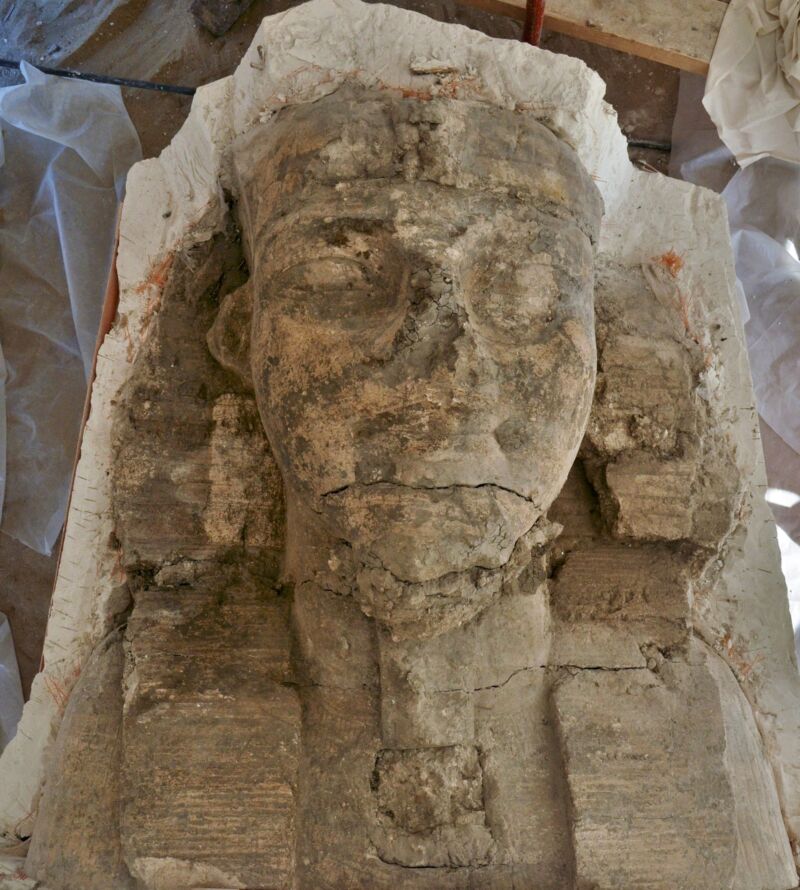Archaeologists in Egypt recently rediscovered two sphinxes that guarded the mortuary temple of Pharaoh Amenhotep III, the grandfather of Tutankhamun. Despite 3,400 years of weathering, the sphinxes still bear the carved limestone face of the pharaoh, who is adorned with a royal headdress and beard. The pair of 8-meter-long sphinxes flank the entrance to a processional avenue, which celebrants would have followed from the main part of the temple to a columned courtyard.
The Temple of Millions of Years lasted less than a century
Amenhotep III ordered the temple, which he called the Temple of Millions of Years, to be built late in his reign. The temple served as a monument to the pharaoh’s rule—think of it as an especially grand, monarchist version of a US presidential library—but also as a temple where priests could hold rituals and make offerings to the dead pharaoh, who was worshipped as a god.
The sprawling 35-hectare complex stood across the Nile River from the ancient city of Thebes, where Amenhotep III ruled in life. It's also not far from the Valley of the Kings and Amenhotep III’s royal tomb. Ancient records describe the earthquake that destroyed most of the temple in about 1200 BCE, leaving only two 18-meter-tall, 720-ton statues of Amenhotep III standing.
A series of floods over the following millennia further eroded the foundations of the royal monument. Many of the temple's statues and columns, which ended up buried underground following the earthquake, lay submerged by the floods. Archaeologists have been working to study and restore the ruined temple since 1998.
Sphinxes, columns, and a lion-headed enforcer goddess
In addition to the pair of sphinxes, the team led by archaeologist Horig Sorosian also recently discovered that one of the temple’s great columned halls was larger and more lavish than anyone had realized. Careful excavations unearthed the stone bases of several columns in the southern half of the hall, suggesting that it extended further.
Archaeologists also rediscovered a sandstone wall decorated with inscriptions and images of royal celebrations that took place in the last decade of Amenhotep’s reign. And three black granite busts of the goddess Sekhmet—depicted, as she often was, with the head of a lion—were found guarding the front of the temple’s open courtyard. Sekhmet was known as a violent, destructive enforcer for the sun-god Ra and as a protector of Egypt’s kings.

The recent finds are being cleaned and restored. So far, the painstaking process has revealed the pharaoh’s name inscribed on the chests of both sphinxes, as well as traces of the bright colors that once decorated the columns in the temple’s great hall. According to Egypt’s Ministry of Tourism and Antiquities, the columns will eventually be re-installed in the temple, and the Sekhmet busts and other statues will be displayed in their original places.
For now, dozens of recovered statues from the temple are stored (with many on display) in a museum in Luxor, the modern city that now stands on the site of ancient Thebes.
Religious upheaval in the Two Kingdoms
After Amenhotep III’s death, his son Amenhotep IV took the throne. Within four years, Amenhotep IV had changed his name to Akhenaten and outlawed the worship of Egypt’s traditional gods; in their place, he founded a monotheistic religion devoted to the sun-god Aten, complete with a new capital city, Amarna.
Akhenaten’s son, Tutankhaten, became the ruler of Upper and Lower Egypt at just 8 or 9 years old; the real power in the kingdom was in the hands of the child king’s vizier, Ay. Under Ay’s guidance, the king made the politically savvy choice to end his father’s deeply unpopular worship of Aten and restore the old gods to their former place. He also changed Tutankhaten's name to one of the best-known Egyptian royal names today: Tutankhamun.
Earlier this month, archaeologists performed a high-resolution 3D X-ray scan on Amenhotep III’s mummified remains.



3175x175(CURRENT).thumb.jpg.b05acc060982b36f5891ba728e6d953c.jpg)

Recommended Comments
There are no comments to display.
Join the conversation
You can post now and register later. If you have an account, sign in now to post with your account.
Note: Your post will require moderator approval before it will be visible.